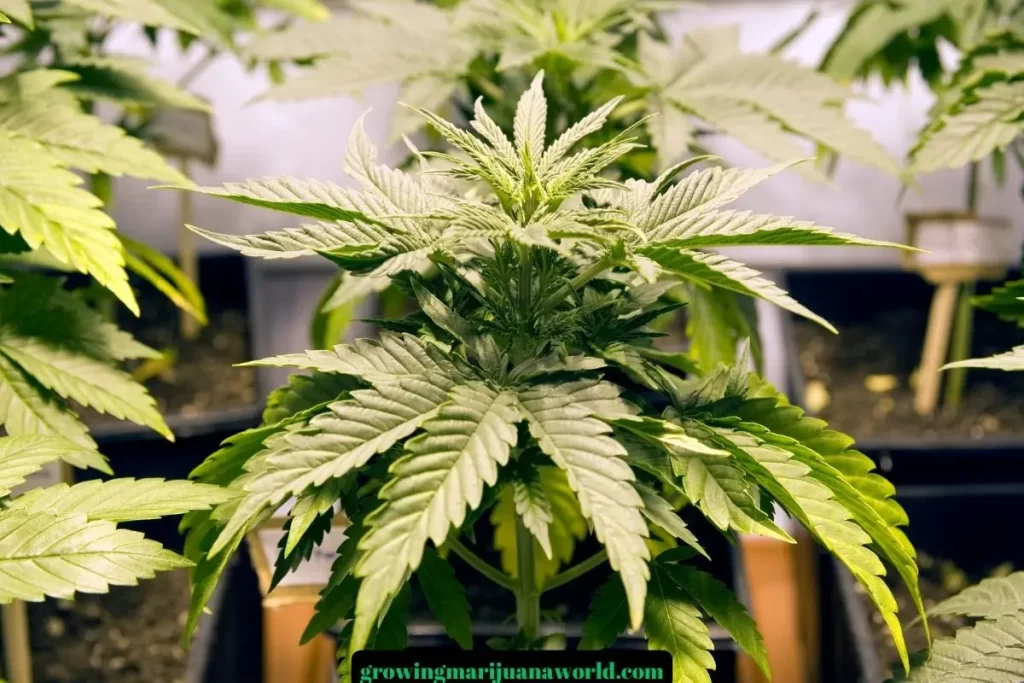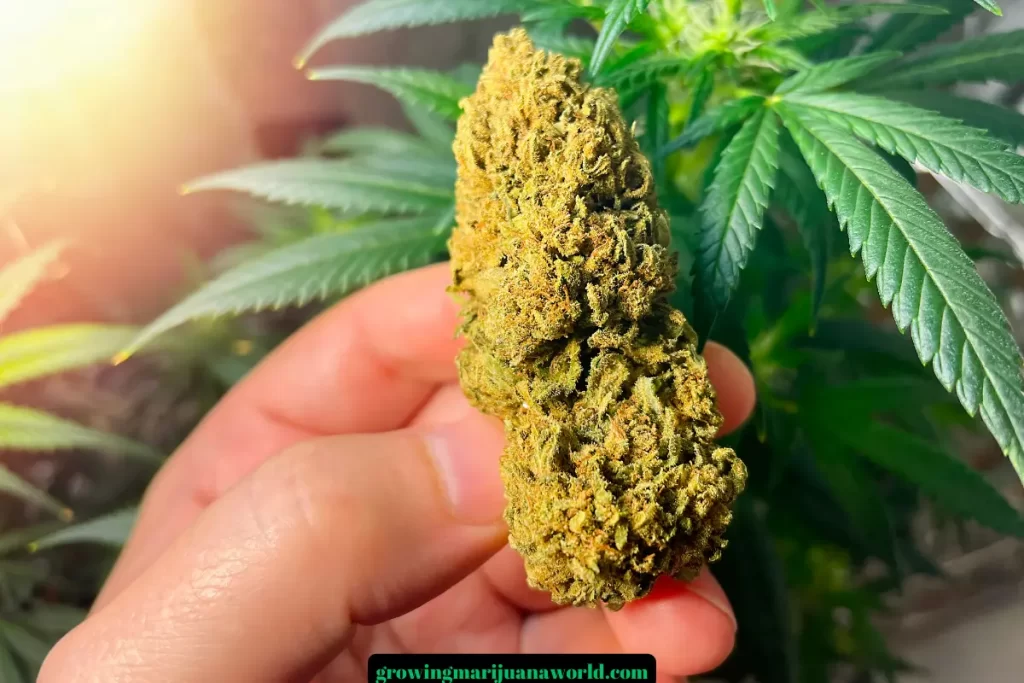How to Grow Sour Diesel Marijuana: A Comprehensive Guide
Sour Diesel, often referred to as Sour D, is a sativa-dominant strain that has gained immense popularity among cannabis enthusiasts for its pungent aroma, energizing effects, and potent high.
Growing Sour Diesel can be rewarding but requires careful attention to detail and a good understanding of its needs. This guide will provide you with a step-by-step approach to successfully cultivate this renowned strain.
Introduction to Sour Diesel
Sour Diesel is known for its distinct diesel-like aroma with citrus and earthy undertones. This strain typically contains a high THC content, often ranging between 20-25%, making it a favorite among users looking for a potent high that boosts creativity and energy.
Originating in the early 1990s, Sour Diesel is believed to be a cross between Chemdawg 91 and Super Skunk. Its sativa dominance results in a cerebral high that is both euphoric and energizing, making it ideal for daytime use.
Selecting the Right Seeds
Choosing high-quality seeds is crucial for a successful grow. Look for reputable seed banks that offer Sour Diesel seeds. Ensure the seeds are mature, which is indicated by a dark color and a hard shell. Feminized seeds are recommended to avoid the hassle of sexing plants and the risk of male plants pollinating the females.
Auto flowering seeds are another option for beginners as they automatically switch from the vegetative stage to the flowering stage without the need to change the light cycle.
One highly recommended source for Sour Diesel seeds is the ILGM (I Love Growing Marijuana) seed bank. I purchase seeds from ILGM regularly and have always been impressed by their quality and customer service.
They offer a wide variety of strains, including feminized and auto flowering options, which ensures you get the best seeds for your growing needs.
How to Identify Quality Seeds
Quality cannabis seeds are typically firm to the touch and dark brown with lighter stripes or mottled patterns. Avoid seeds that are green, white, or very soft, as they are likely immature and will have a lower germination rate. Reputable seed banks like ILGM often provide detailed information about the strain, including its genetic background, flowering time, yield, and specific growing requirements, which can be invaluable for planning your grow.
For the best results, consider purchasing Sour Diesel seeds from ILGM. Their seeds are consistently high quality, and they offer detailed growing guides and excellent customer support to help you every step of the way.
Check out my honest Review of Sour Diesel seeds from ILGM here
Setting Up Your Grow Space
Indoor vs. Outdoor Growing
- Indoor Growing: Provides more control over environmental factors such as light, temperature, and humidity. It allows for year-round growing and often results in higher potency buds. Indoor growing requires an investment in equipment such as grow lights, ventilation systems, and temperature and humidity controllers. However, the ability to closely monitor and adjust these factors can lead to higher quality yields.
- Outdoor Growing: Utilizes natural sunlight and can result in larger plants and higher yields. However, it is more susceptible to pests, diseases, and weather conditions. Outdoor growing is often more cost-effective and environmentally friendly, relying on natural resources and minimal equipment. The key to successful outdoor growing is selecting a location with plenty of sunlight, good air circulation, and protection from extreme weather and pests.
Choosing the Right Grow Lights
For indoor growing, LED grow lights are highly recommended due to their energy efficiency and full-spectrum light. Other options include HPS (High-Pressure Sodium) lights and CFL (Compact Fluorescent Lights). LED lights are particularly favored for their ability to produce specific light spectrums that can be tailored to the needs of the plant at different growth stages. HPS lights, while more energy-intensive, are excellent for the flowering stage due to their high-intensity light output.
Environmental Control
Maintaining the right environment is crucial for the health and productivity of your plants. This includes controlling temperature, humidity, and ventilation. Cannabis plants prefer temperatures between 70-85°F during the day and slightly cooler at night. Humidity levels should be kept around 40-60% during the vegetative stage and reduced to 30-40% during the flowering stage to prevent mold and mildew. Good air circulation is also essential to prevent pests and diseases and to strengthen the plants’ stems.
Germination Process
- Soak Seeds: Place your seeds in a glass of distilled water for 12-24 hours. This helps to soften the seed coat and encourages germination.
- Paper Towel Method: Transfer the soaked seeds to a damp paper towel. Place the towel in a plastic bag and store it in a warm, dark place. Check daily and keep the paper towel moist but not soaking wet.
- Planting: Once the seeds have sprouted (usually within 2-5 days), plant them about 1/4 inch deep in a small pot filled with a light, aerated soil mix. Ensure that the root is pointing downward and cover it lightly with soil.
Tips for Successful Germination
Maintain a warm temperature around 70-85°F to promote faster germination. Avoid handling the seeds or seedlings directly with your hands to prevent damage or contamination. If using soil, choose a seedling-specific mix that is light and airy to support delicate root development.

Vegetative Stage
Lighting Schedule
During the vegetative stage, plants require 18-24 hours of light per day. This mimics the long days of summer and promotes vigorous growth. Consistent light exposure encourages the plants to develop strong stems and leaves, which are essential for supporting the heavy buds that will form during the flowering stage.
Nutrient Requirements
Sour Diesel plants thrive on a diet rich in nitrogen during the vegetative stage. Use a balanced fertilizer with an N-P-K ratio of around 3-1-2. Additionally, micronutrients such as calcium, magnesium, and iron are important for overall plant health. Monitor your plants for signs of nutrient deficiencies, such as yellowing leaves or stunted growth, and adjust your feeding schedule accordingly.
Watering Practices
Proper watering is crucial for healthy growth. Overwatering can lead to root rot, while underwatering can stress the plants and stunt their growth. Water the plants thoroughly when the top inch of soil feels dry to the touch. Ensure that the pots have good drainage to prevent water from pooling at the bottom.
Flowering Stage
Light Cycle Adjustment
Switch the light schedule to 12 hours of light and 12 hours of complete darkness to trigger the flowering stage. This simulates the shorter days of autumn and encourages the plants to start producing buds. Ensure that the dark period is uninterrupted, as any light leaks can stress the plants and potentially cause them to revert to the vegetative stage or develop hermaphroditic traits.
Managing Pests and Diseases
Common pests include spider mites, aphids, and whiteflies. Regularly inspect plants and use organic pesticides or beneficial insects like ladybugs to control infestations. Ensure good air circulation and maintain humidity levels to prevent mold and mildew. In addition to pests, watch for signs of fungal infections, such as powdery mildew or bud rot, and address them promptly with appropriate treatments.
Nutrient Requirements During Flowering
During the flowering stage, plants require more phosphorus and potassium to support bud development. Use a bloom-specific fertilizer with a higher P-K ratio, such as 1-3-2. Reduce nitrogen levels to prevent excessive foliage growth, which can divert energy from bud production.
Harvesting Sour Diesel
Harvesting at the right time is critical to maximize potency and flavor. Look for the following signs:
- Trichomes: Use a magnifying glass to inspect the trichomes. Harvest when they turn from clear to a milky white color with some amber hues. Clear trichomes indicate that the plant is not yet mature, while amber trichomes suggest that the THC is beginning to degrade into CBN, leading to a more sedative effect.
- Pistils: The pistils (hairs) on the buds will turn from white to a reddish-brown color. This change in color indicates that the plant is reaching the end of its flowering cycle.
Harvesting Techniques
Use clean, sharp scissors or pruning shears to cut the branches with buds. Handle the buds gently to avoid damaging the trichomes. Some growers prefer to harvest in stages, starting with the top buds that receive the most light and allowing the lower buds to mature further.
Drying and Curing Your Buds
- Drying: Hang the trimmed buds upside down in a dark, well-ventilated room. Maintain a temperature of 60-70°F and humidity levels around 50%. Drying typically takes 7-10 days, during which the buds should feel dry to the touch but not brittle.
- Curing: Once the buds are dry, place them in glass jars. Open the jars daily for the first week to release moisture, then reduce to opening once a week. Cure for at least 2-4 weeks for optimal flavor and potency. Proper curing enhances the aroma and smoothness of the buds by allowing chlorophyll and other unwanted compounds to break down.

Advanced Drying and Curing Tips
Use hygrometers in your jars to monitor humidity levels. Aim for a stable environment of around 60-65% humidity during the curing process. If the humidity levels are too high, open the jars more frequently or use desiccant packs to absorb excess moisture. Conversely, if the buds are too dry, you can add a small piece of orange peel or a humidifying pack to reintroduce some moisture.
Common Growing Problems and Solutions
- Nutrient Burn: Recognized by yellowing leaves with brown tips. Reduce fertilizer concentration and flush the soil with water. Always follow the recommended feeding schedule and avoid over-fertilizing.
- Overwatering: Causes root rot and stunted growth. Allow the soil to dry out between waterings. Ensure that your pots have adequate drainage and avoid letting the plants sit in standing water.
- Light Burn: Identified by bleached or burned leaves. Increase the distance between the plants and the grow lights. Adjust the light intensity gradually to allow the plants to acclimate to higher light levels.
Additional Problems
- pH Imbalance: Cannabis plants are sensitive to the pH of their growing medium. Aim to keep the soil pH between 6.0 and 7.0. Use pH testing kits or digital meters to monitor the pH and adjust it with appropriate products like pH up or pH down solutions.
- Temperature Stress: Extreme temperatures can stress the plants and affect their growth. Use fans, air conditioners, or heaters to maintain a stable temperature within the ideal range.
Tips for Maximizing Yield and Potency
- Training Techniques: Use low-stress training (LST) or topping to encourage bushier growth and more bud sites. LST involves gently bending and tying down branches to create an even canopy, while topping involves cutting the main stem to promote the growth of multiple colas.
- Optimal pH Levels: Maintain soil pH between 6.0-7.0 to ensure nutrient uptake. Regularly check the pH of your water and nutrient solutions.
- Consistent Monitoring: Regularly check for pests, diseases, and nutrient deficiencies to address issues promptly. Keep detailed records of your plants’ progress, including feeding schedules, growth patterns, and any problems encountered.
Advanced Growing Techniques
- Sea of Green (SOG): This method involves growing many small plants in a limited space and initiating the flowering stage early. It maximizes light efficiency and can lead to quicker harvests.
- Screen of Green (ScrOG): Similar to SOG, but involves training plants to grow through a horizontal screen. This method ensures an even canopy and maximizes light exposure to all parts of the plant.
Conclusion
Growing Sour Diesel requires careful attention to detail, but with the right knowledge and techniques, you can produce high-quality, potent buds. Remember to maintain a controlled environment, provide proper nutrients, and harvest at the right time for the best results. Whether you’re a beginner or an experienced grower, following these guidelines will help you achieve a successful Sour Diesel harvest.










